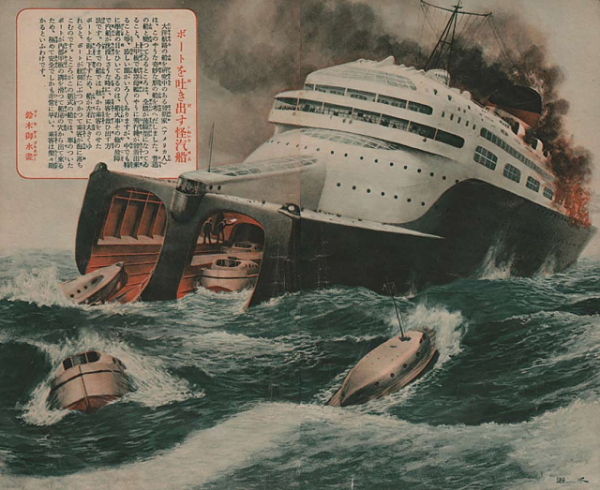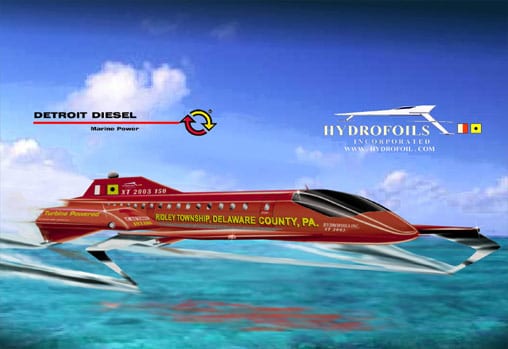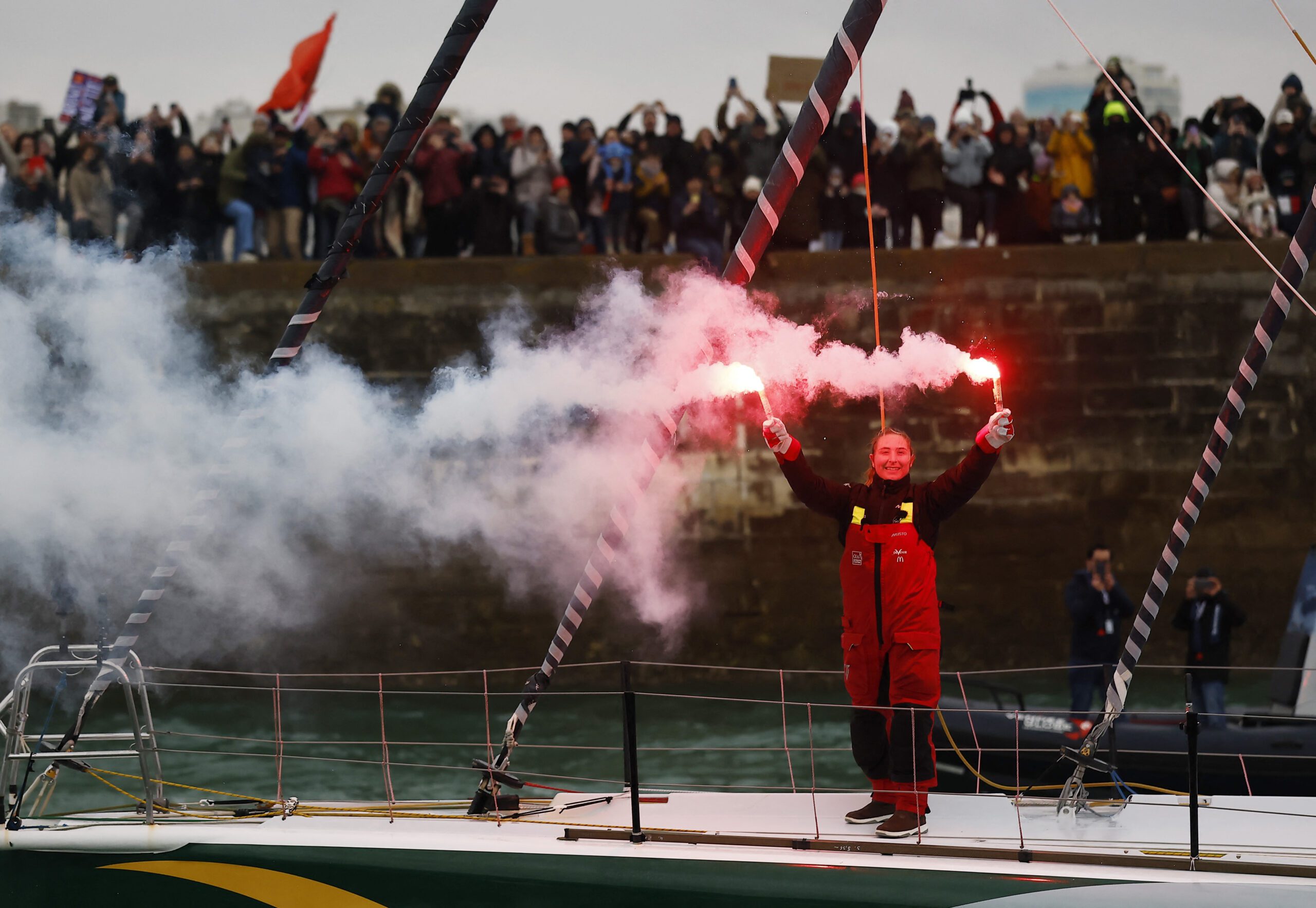The Future Via Japan

In 1936, a Japanese magazine called Shonen Club published a series of illustrations imagining what the future of transportation might look like. Among them, this giant ship that can spit out smaller ships from an embedded dock. (Via Scuttlefish, via boingboing)
The Future Via Detriot

It has options for buying more exising air transports like the C17 and more of the LMSR (Large medium speed roll on/roll off ships)
The more interesting options are the development of improved airlift and sealift systems. For airlift, they examine heavy lift hybrid airships, which are blimps that also have dynamic lift. The airships would have 500 plus ton cargo capacity with 80-120 knot speed (100knot average). The high speed ships they are examining are NAVSEA Trimaran concept with 55 knot/hour speed, 5000 ton payload capacity, 360 MW of installed power, 8,700 nautical mile range and 8 days to transit 10,000 nautical miles.
A near-term high speed ship with less technical risk with 45 knot/hour speed, 10,000 ton payload capacity, 250 MW of power, 5,000 nm range and 9 days to transit 10,000 nm.
Ken has numerous “Design Originals” including the first miniature resuscitator used in space shuttles; the first Doppler radar speed-measuring device; the first chemical alcohol-measuring device (Breathalyzer) and the first hydrofoil ever to exceed 100 mph . (Via Next Big Future)
The Future Via The Past

No info on this vessel of our dreams but it sure would be fun to drive.
The Future Via The Afterlife

This ship design was actually built but lacked funding to keep her running. The idea? To transport cryogenically frozen remains of rich people to the Arctic so they did not have to spend eternity in expensive freezers. Fooled you
The Future Via A Barrel
 anixs)
anixs)
To demonstrate the feasibility of his design for a high-speed ship that rolls over the water like a barrel, a marine engineer of Port Blakely, Wash., has constructed an electric-powered model that is reported to perform all the maneuvers of a conventional vessel. He proposes building full sized ocean vessels on a similar plan, with stationary decks for passengers and cargo inside the revolving, electrically driven shell. The project recalls that of another barrel ship inventor of an earlier day, who actually completed a 110-foot model of his steam-powered craft and piloted it 200 miles across Lake Ontario (P.S.M., Dec, ’33, p. 26). (Via Modern Mech

 Join The Club
Join The Club







 anixs)
anixs)





